
Ah, pound cake. A simple, and simply delicious, foundation recipe appreciated by the masses. Originating in 18th century northern Europe, pound cake originally called for a pound each of flour, sugar, eggs, and butter. Hence the name, pound cake. We’ve made some tweaks over the years to make it more palatable, but the spirit is still the same. It’s rare to find someone who will genuinely turn their nose up at a pound cake. Most people may not go out of their way to get it, but if pound cake is there, it’s getting devoured.
Although I enjoy a good pound cake on its own, there are a few ways you can jazz it up. Serve it with whipped cream and berries, for a take on a shortcake (yes, a true shortcake is made with sweet biscuits, but sometimes you have to work with what you’ve got). I also like to toast it in a pan with butter, so it gets all hot and crisp on the outside while staying nice and pillowy inside! Dish up that hot, crisp pound cake with some ice cream, caramel, and pecans. Trust me, it’s absolutely heavenly.
FAQs and Science
Why deviate from the original recipe for pound cake?
As the name would suggest, the original recipe for pound cake makes for a very dense cake. There are no chemical or organic leaveners inside of it, like baking powder or yeast, that would help with the rise. Any air you can incorporate while mixing and the slight lift the eggs would give are really all that’s going to help cut through that density at all. Plus, there was no salt, any kind of extract, or spice in the original version, so the flavor was really just bland sugar. That may have cut it back in the 18th century, when things like sugar and spices were still luxury goods, but with the abundance that’s available today, there’s no reason not to improve upon the original concept.
Does it really matter if my eggs are room temperature?
This is one of those areas that always reminds me of how much of a science baking truly is. For the batter to come together correctly, all of the ingredients need to be the same temperature. Since butter has to be room temperature in order to be malleable enough to cream with the sugar, the eggs need to be warmed up as well. If they aren’t, the batter is at risk of splitting.
Is there a way to quickly bring eggs up to room temperature?
Yes! If at the beginning of the recipe you place your eggs in a bowl and cover them with the hottest water that will come out of your tap. By the time you’re ready to use them, they’ll be the perfect temperature. There’s no need to pull them out hours ahead of time.
Why does it matter that you begin and end on dry goods when you alternate between adding those and the milk?
Similarly to the room temperature eggs, the order in which the ingredients are added will affect the emulsification of the batter. For it to come together so that it stays nice and smooth, it’s important to begin and end on dry goods.
What You’ll Need
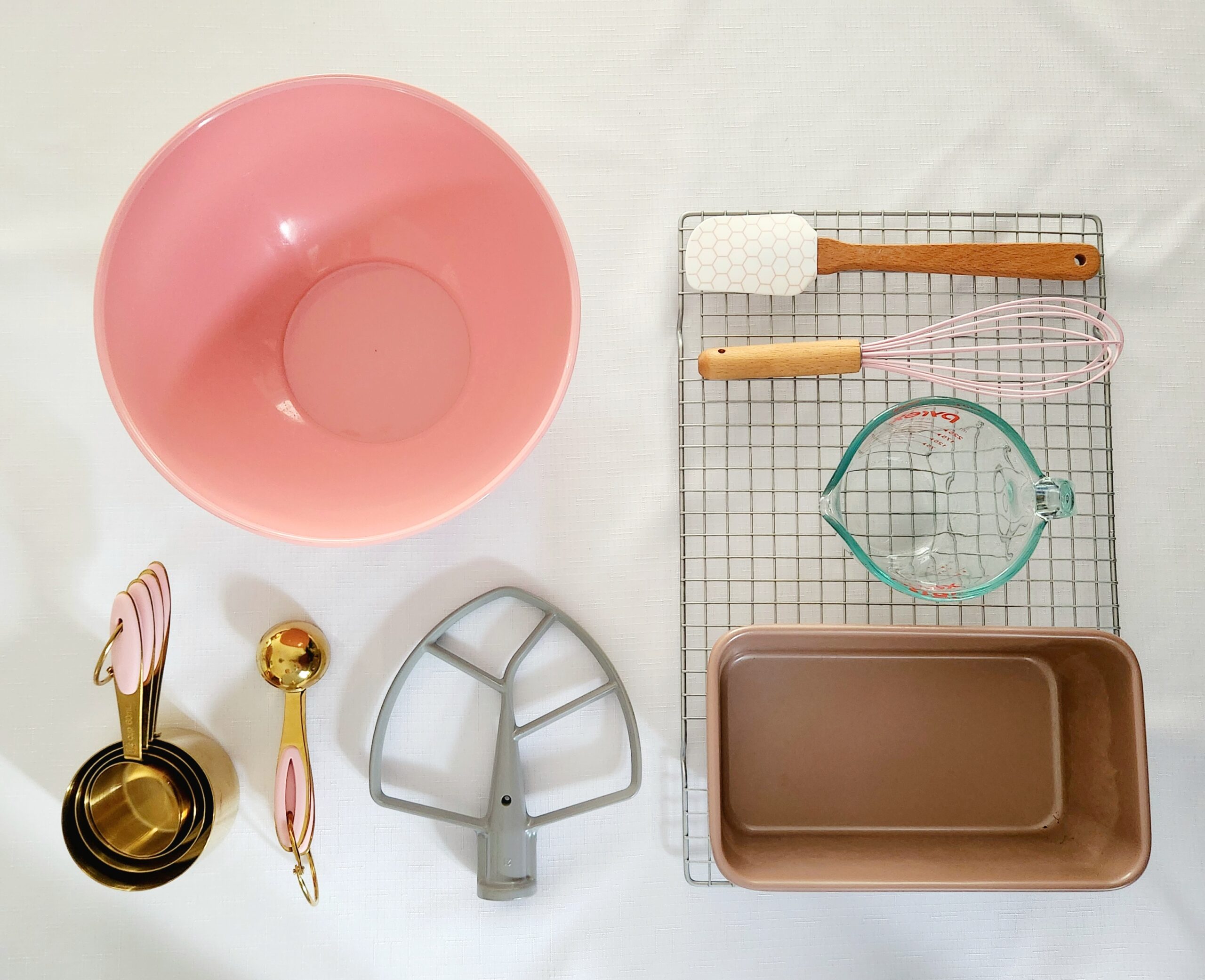
- 9×5 inch loaf pan
- Parchment paper
- Nonstick baking spray
- Stand mixer with paddle attachment
- Medium mixing bowl
- Dry measuring cups
- Liquid measuring cup
- Measuring spoon
- Whisk
- Rubber spatula
- Cooling rack
The Process
To begin, preheat the oven to 350F, on the convection setting if possible, and prepare the pan. Line a 9×5 inch loaf pan on the bottom and up the two longer sides with parchment paper, so it comes 1-2 inches above the top of the pan. Spray the uncovered shorter sides with nonstick baking spray. This way, it will be easy at the end to lift the cake out of the pan and transfer it to the cooling rack without any struggle. Set the pan aside.
In a medium mixing bowl, whisk together the flour, salt, and baking powder. Set the dry goods aside.
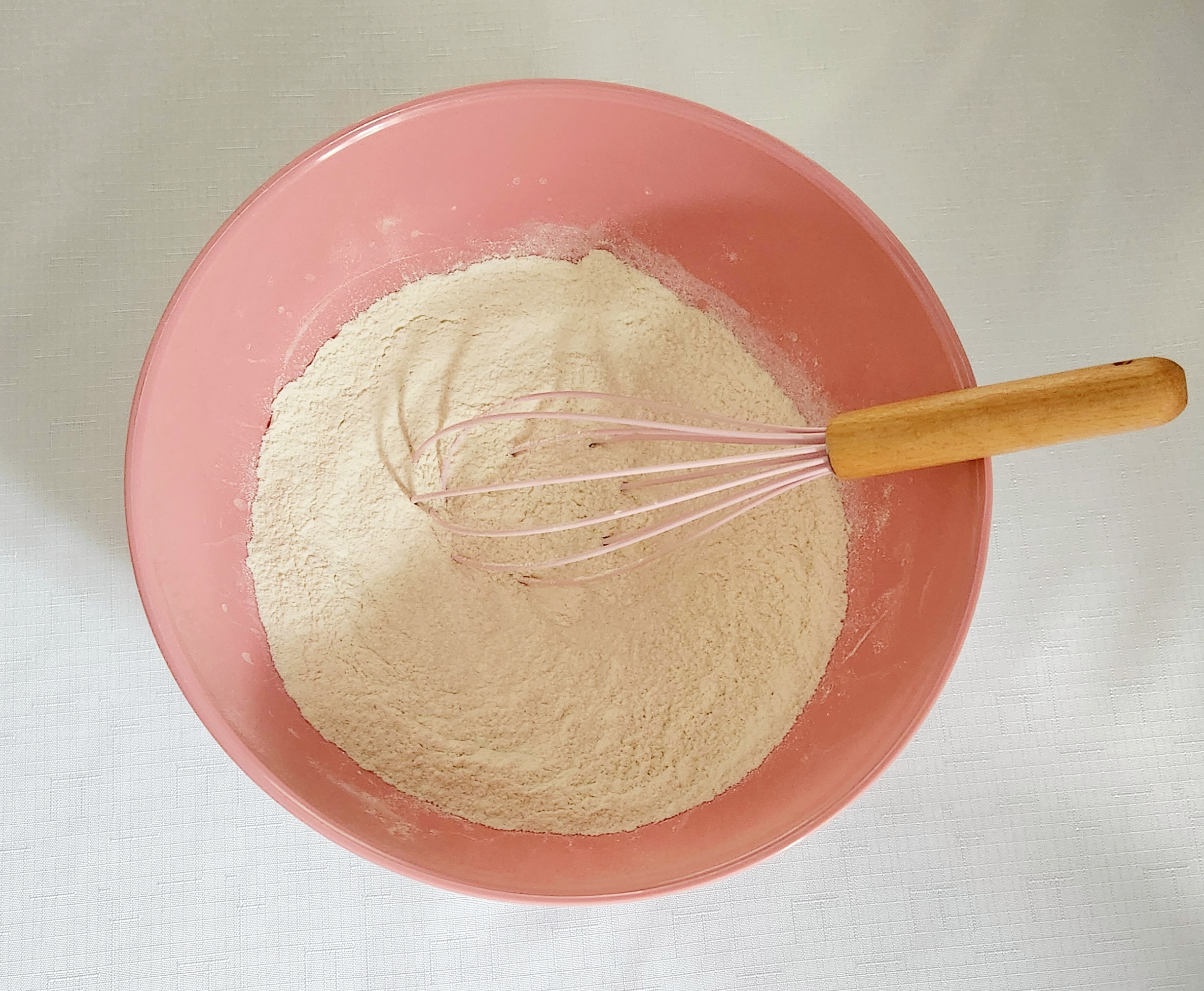
In the bowl of a stand mixer fitted with the paddle attachment, cream together the butter and sugar on level 3 for 4-5 minutes. It should go from a butter yellow color to almost white and very fluffy. As tempting as it may be to stop the mixer early once the butter and sugar have just come together, there isn’t much of a leavening agent in this batter. Because of that, the mixer is doing a very important job during this step by incorporating a lot of air. Let it do its job to completion. Scrape down the sides of the bowl with a rubber spatula.

One at a time, add the eggs, egg yolks, and vanilla extract. Make sure each egg has been fully absorbed by the creamed butter mixture before adding in the next one. It’s important to use room temperature eggs. If they aren’t, the batter is at risk of splitting due to the drastic temperature change from the butter. To quickly bring chilled eggs up to room temperature, submerge them in a bowl of the hottest water that will come out of your tap at the beginning of this process. By the time you’re ready to use them, they will have warmed up! Scrape down the sides of the bowl as needed.
Turn the mixer off and add ⅓ of the dry goods. Turn the mixer to level 1. When just a few streaks of flour remain, pour ½ of the milk into the batter.
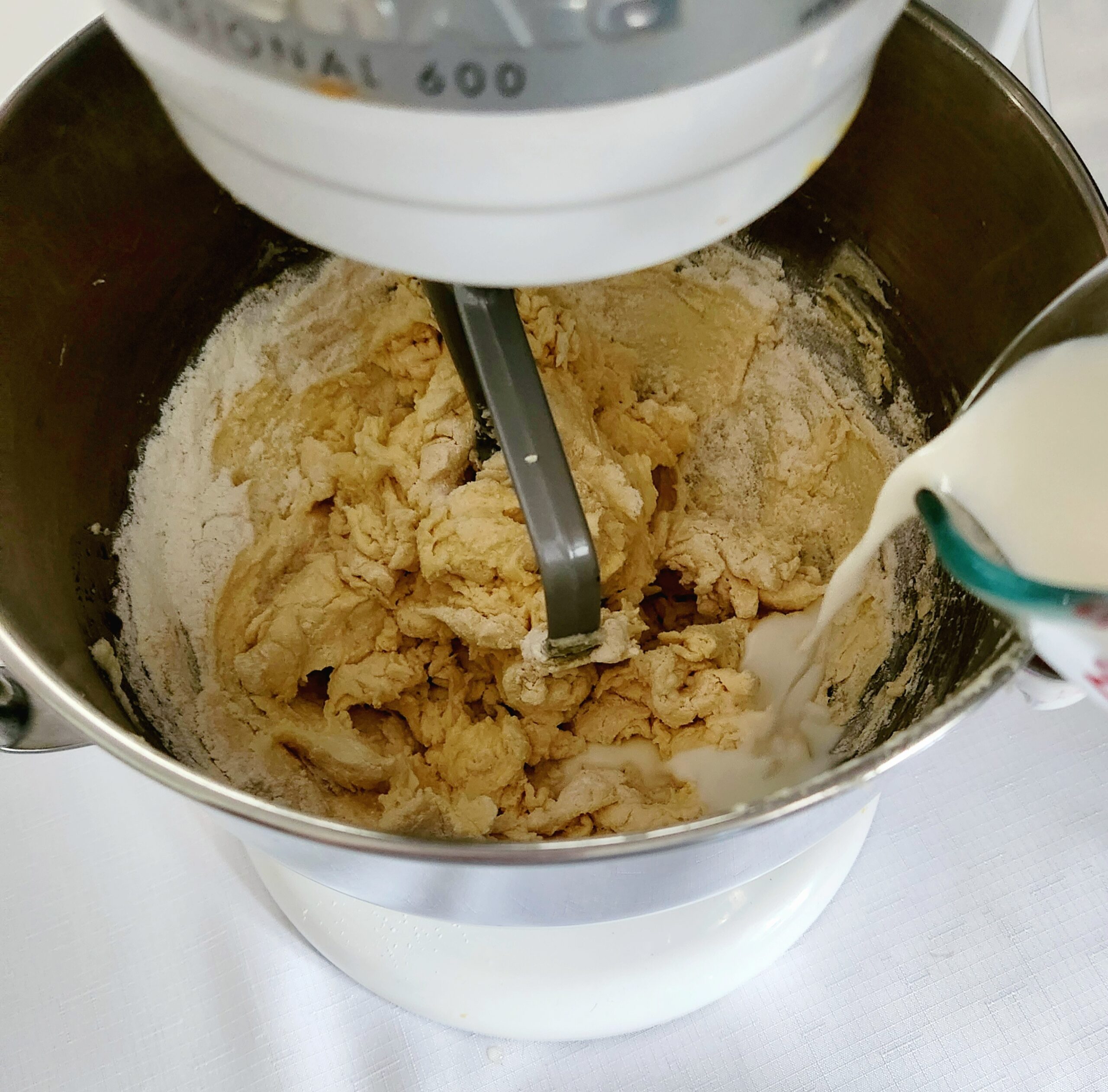
Continue alternating between the two in this way, until all of the milk and dry goods have been added. Make sure to end on dry goods, or the batter will appear curdled rather than smooth.
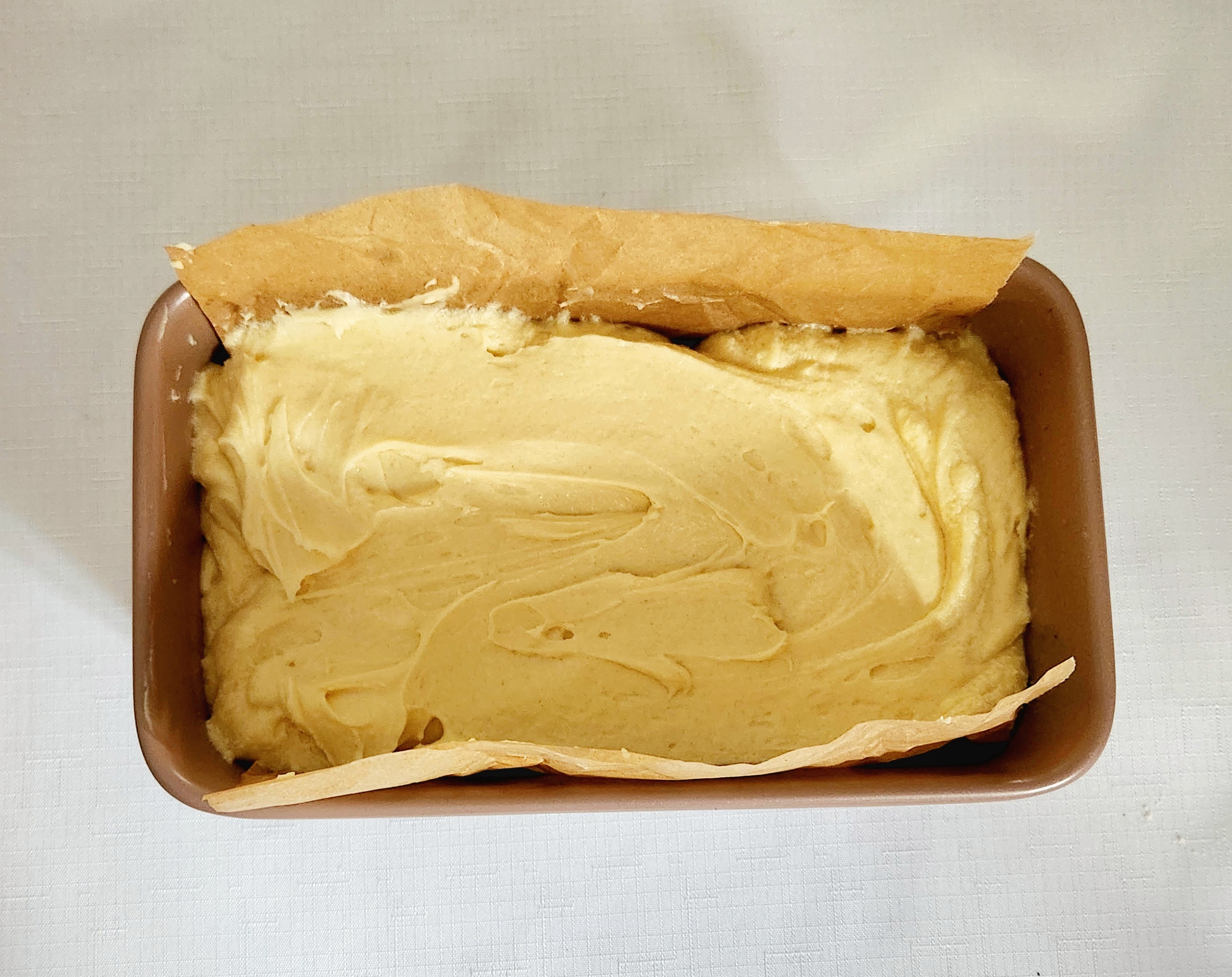
Pour the batter into the prepared pan and bake in the center rack for 70 minutes, or until a toothpick inserted in the center comes out clean. Flip the pound cake around halfway through.
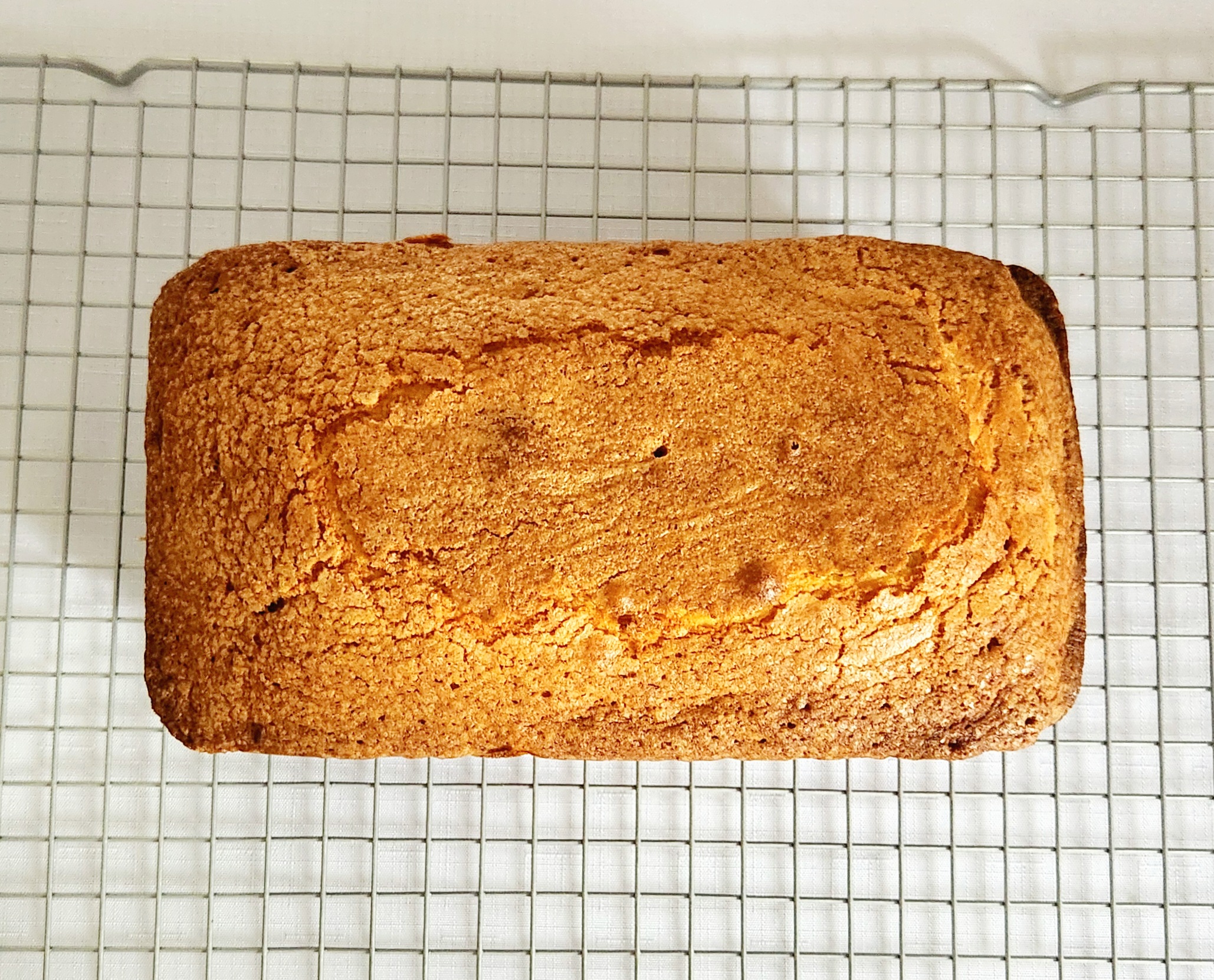
Allow the baked pound cake to rest in the pan for 5-10 minutes, then lift it out and transfer it over to a cooling rack. Giving the cake that time to briefly rest in the pan will improve its structural integrity, which will keep it from falling apart during the transfer to the cooling rack. Once the cake has come all the way down to room temperature, slice and enjoy! Store in an airtight container or in a gallon zip top bag on the counter for up to 3 days.

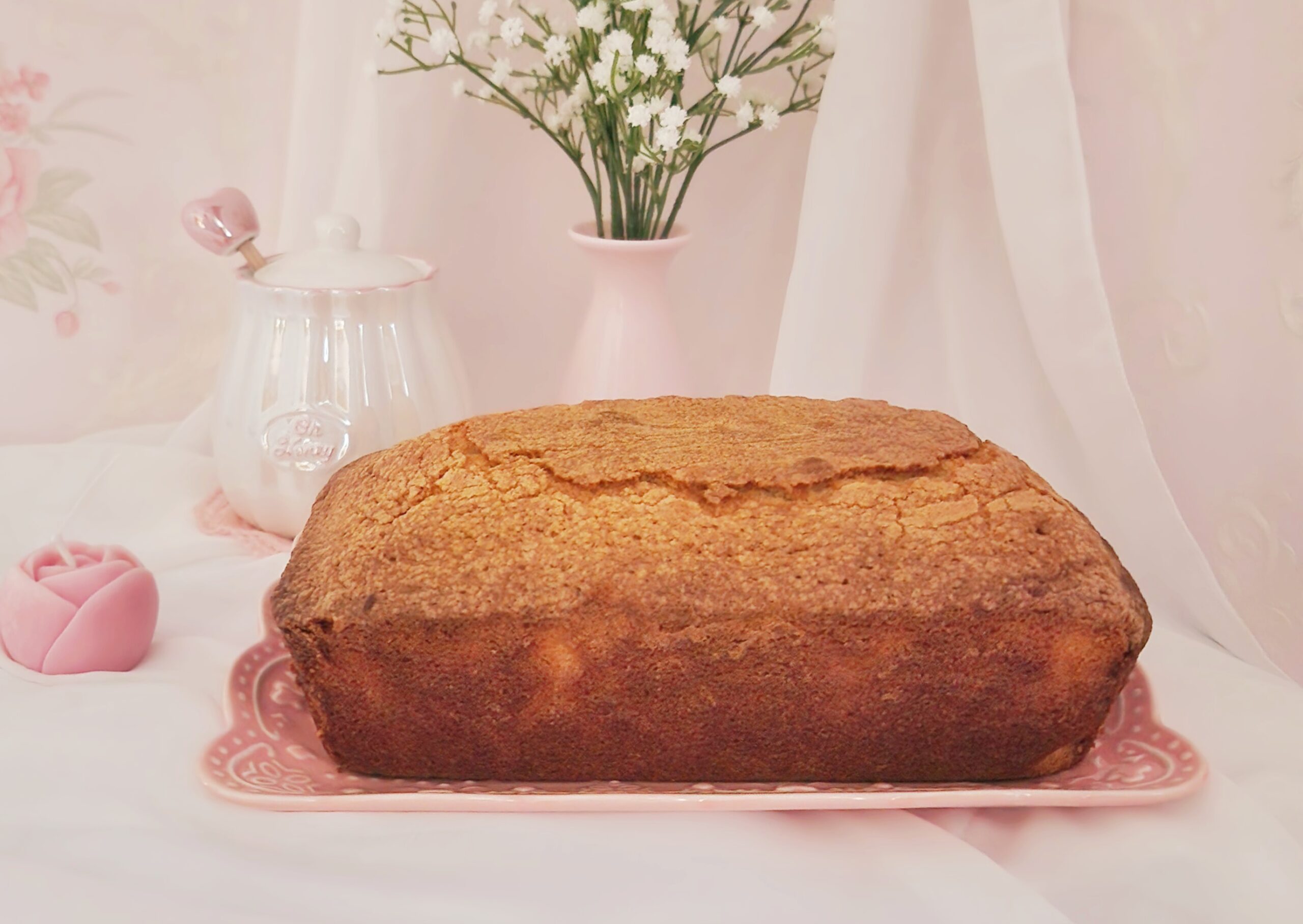
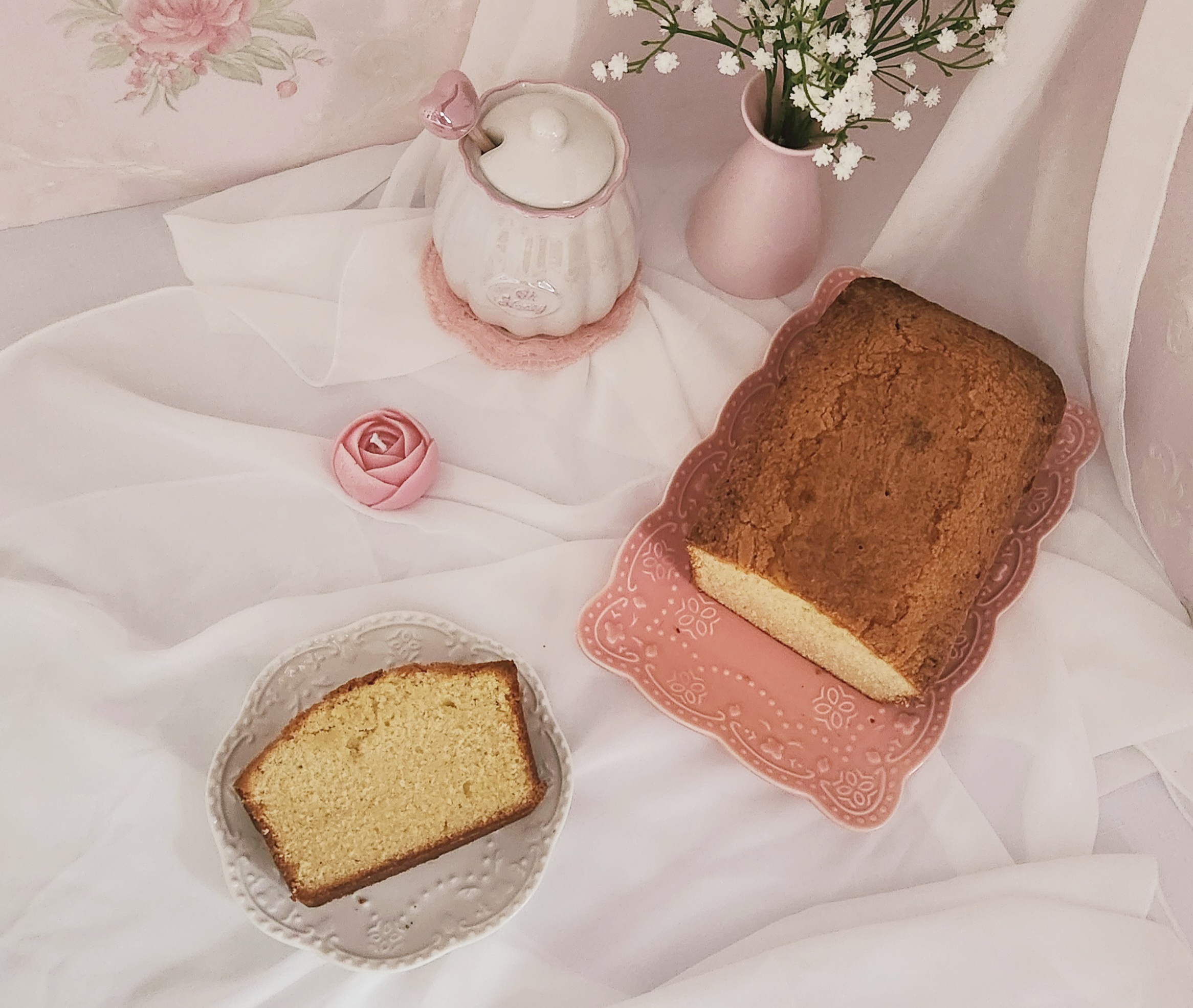
Pound Cake
Bake Time: 350F for 70-75 minutes
Servings: 10 servings, 9×5 loaf
Total Time: 100 minutes
Prep Time: 30 Minutes
Ingredients:
- 1 ¾ cups all-purpose flour
- ¾ teaspoon salt
- ½ teaspoon baking powder
- 16 Tablespoons unsalted butter, softened
- 1 ½ cups granulated sugar
- 2 large eggs, room temperature
- 1 large egg yolk
- 1 Tablespoon vanilla extract
- ½ cup whole milk
Directions:
- Preheat the oven to 350F, on the convection setting if possible, and prepare your pan. Line a 9×5 inch loaf pan on the bottom and up the two longer sides with parchment paper, so it comes 1-2 inches above the top of the pan. Spray the uncovered shorter sides with nonstick baking spray. Set the pan aside.
- In a medium mixing bowl, whisk together the flour, salt, and baking powder. Set the dry goods aside.
- In the bowl of a stand mixer fitted with the paddle attachment, cream together the butter and sugar on level 3 for 4-5 minutes. It should go from a butter yellow color to almost white and very fluffy. Scrape down the sides of the bowl with a rubber spatula.
- One at a time, add the eggs, egg yolks, and vanilla extract. Make sure each egg has been fully absorbed by the creamed butter mixture before adding the next one. Scrape down the sides of the bowl as needed.
- Turn the mixer off and add ⅓ of the dry goods. Turn the mixer on to level 1. When there are only a few streaks of flour remaining, pour ½ of the milk into the batter. Continue alternating in this way, until all of the milk and dry goods have been added. Be sure to end on the dry goods, or else the batter will appear curdled.
- Pour the batter into the prepared pan and bake the cake on the center rack for 70 minutes, or until a toothpick inserted in the center comes out clean. Flip it halfway through.
- Allow the baked pound cake to rest in the pan for 5-10 minutes before lifting it out and transferring to a cooling rack. Once the cake has come up to room temperature, slice it up and enjoy! Store in an airtight container or in a gallon sized zip-top bag on the counter for up to 3 days.
Tips
- Fully baked pound cakes can be frozen! Once the cake has completely cooled down, wrap it tightly in plastic and seal it in a freezer safe bag for up to 3 months. Thaw it on the counter, outside of the freezer bag, the night before you’re ready to eat it.

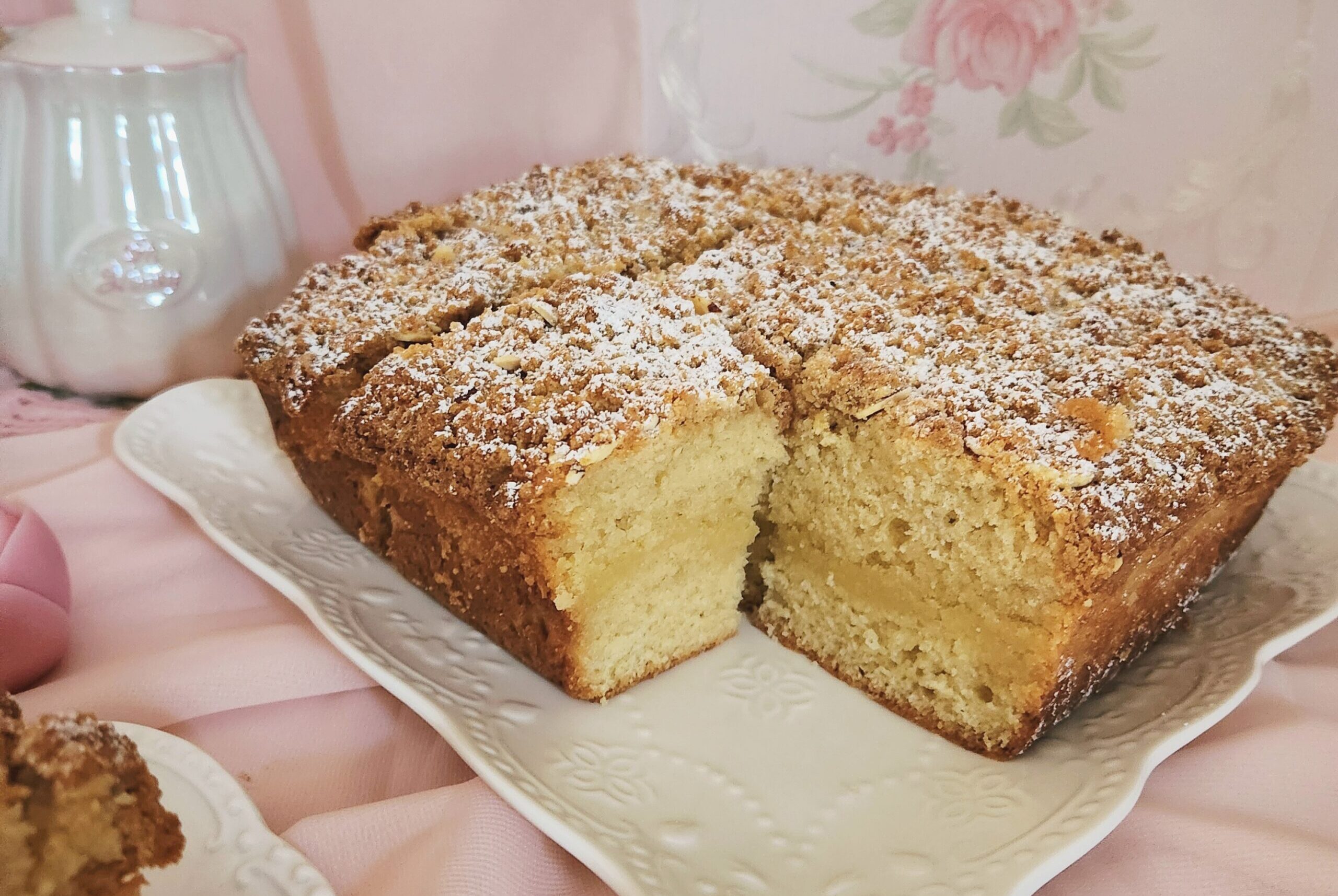
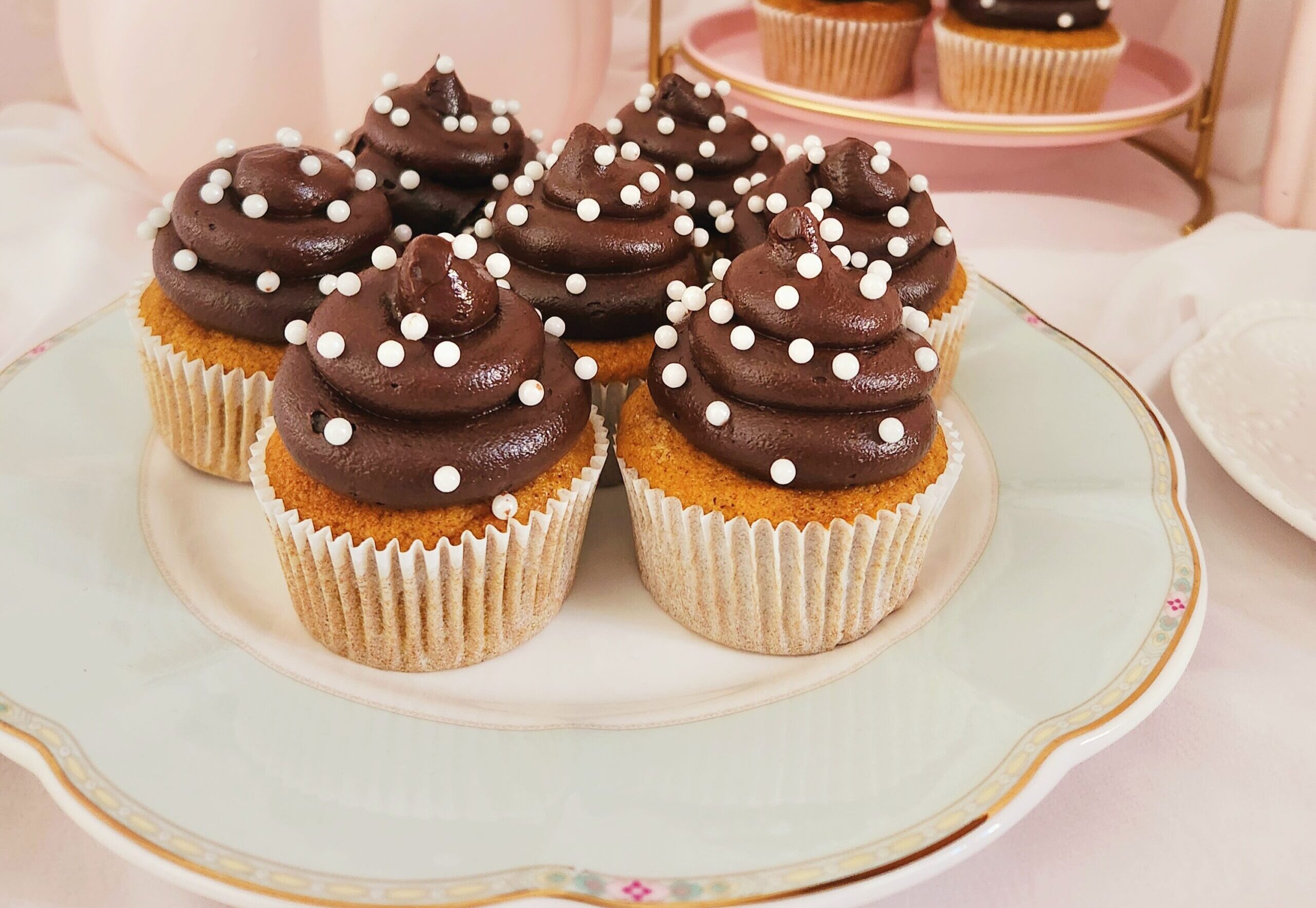
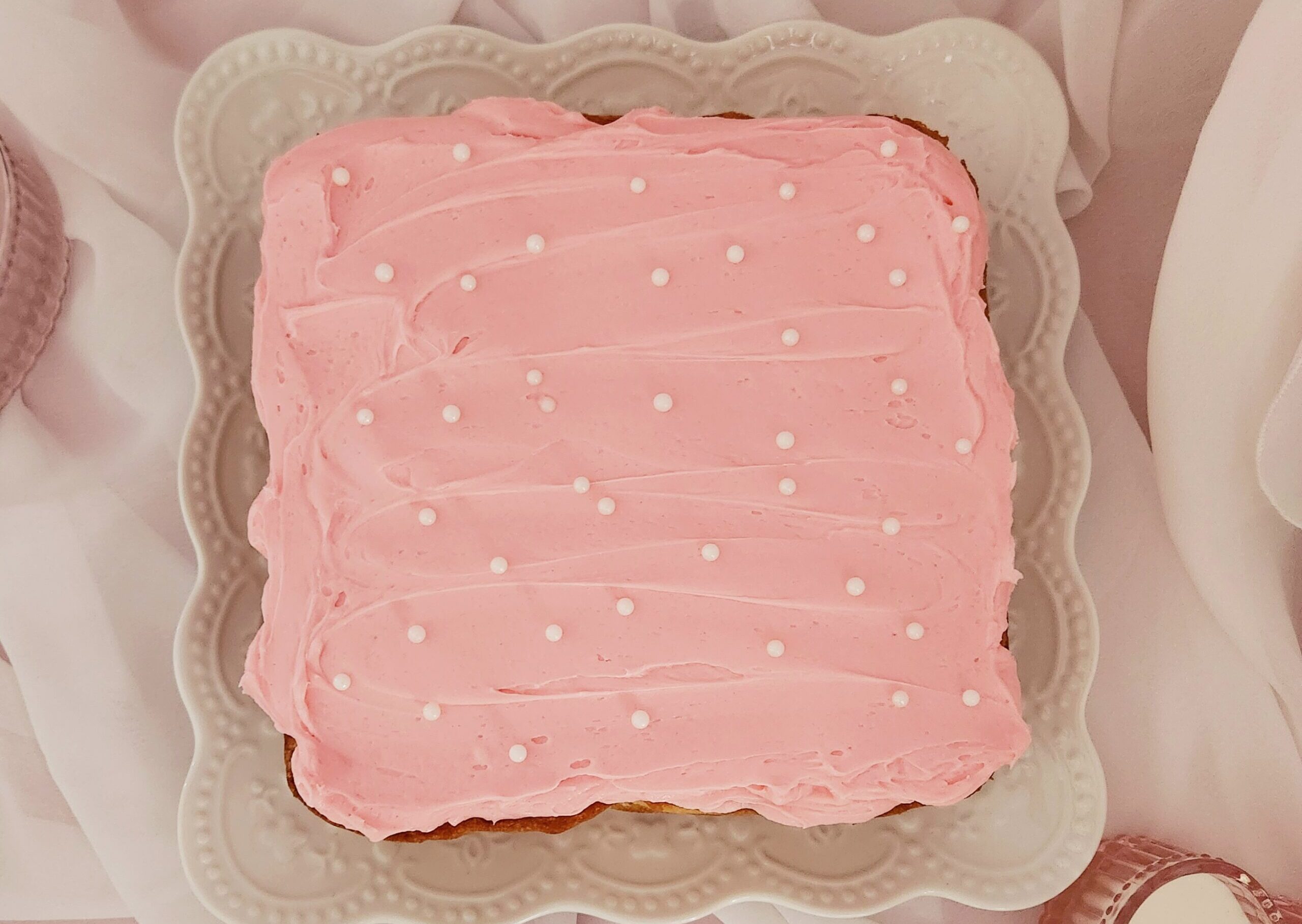
0 Comments